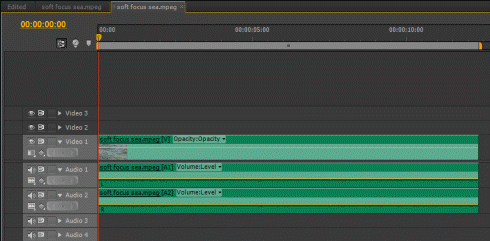

- #SPLIT TRACK INTO MONO PRO TOOLS SHORTCUTS SOFTWARE#
- #SPLIT TRACK INTO MONO PRO TOOLS SHORTCUTS WINDOWS#
Jump from one marker to the next by typing the keypad-period and the number beside each marker name and then period again. These will be shown in the marker list (type command-keypad 5 to bring it up). Markers are a good way to make simple session above the edit window timeline like using “Exterior warehouse” and “Interior office” to keep track of scene changes. Type command-option-tab to save reaching for the mouse every time. You can turn tab to transient on and off by clicking an icon in the edit window header. Jump from one whoosh to the next by pressing tab via the “tab to transient” function. Each of them has five seconds of space in between. Imagine you have a sound file with dozens of whooshes. It works the opposite way, too: control-shift-click on an edit track name to make the mix desk channel strip jump into view. Just control-shift-click on the mix track name to make the edit window’s track jump immediately into view. Have the mix desk in view? Want to see the related track in the edit window? Simple. Here are few tricks to move quickly around the edit window.

It won’t take long before the edit window begins filling with regions scattered throughout your tracks. Type command-option-down arrow to reduce them, and command-option-up arrow to increase them. Want to change many tracks? Drag the mouse vertically across many tracks then try the shortcut. This will change the track selected with the edit cursor. Type control-down arrow to make them smaller (and control-up arrow to make them bigger). Of course, you can right-click on the left track edge and select the size. What about your edit tracks? Perhaps they’re sprawling down the screen in an endless flow. Have you found your mix desk is overflowing with tracks? Tired of scrolling? Want to see as many channels on the screen at once? Type command-option-m to show narrow mix tracks. Note: It’s worth naming your tracks prior to recording or processing on them, as the auto-renamed clips will be named according to the current track name. Want an even faster method? After you’ve finished adding the track name and comments, just type command-return to jump to the next track.This will display the naming window for the track below without the need to click the “OK” button and double-click it Now that you’re done, type command-right arrow to move to the next.Type tab to move to the next field and add comments There’s no need to double click on every track to rename them. After all, the default “Audio 1,” “Audio 2” naming scheme isn’t that helpful. Keep your sessions tidy and understandable by naming tracks. Add a new row of tracks by typing command-shift-down arrow (or remove it by typing command-right arrow ).Cycle through the type of track (audio, midi, mix, etc.) by typing command-up arrow or command-down arrow.Cycle through track channels ( mono, stereo, etc.) by typing command-left arrow or command-right arrow.Type the number of tracks you want to create.Create a new track with command-shift-n.You can create them all quickly without taking your hands off the keyboard: Have a mix of mono and stereo tracks, sends, and mixes? No need to add them one by one. These shortcuts help set up your workspace and make it more manageable. You can save a lot of time before you even begin editing. Working on PC? Substitute “control” anytime you see “command,” “alt” when you see “option,” and “start” (Windows) when you see “control. Instead, we’ll look at some of the most common time-saving keystrokes in these categories: Similarly, we’ll set aside the complexity of keyboard focus mode for now. We’ll skip the basics of opening, saving and so on. Just ask Bruce about how keyboard shortcuts sped up his workflow Save time by using keyboard shortcuts to accelerate your work.

After a few days working in this complex app, you’ll notice these random clicks take a lot of time, especially when repeating the same task again and again.
#SPLIT TRACK INTO MONO PRO TOOLS SHORTCUTS WINDOWS#
It’s possible to do most of your work by pointing and clicking in Pro Tools windows and menus. To get you started, here are 11 clever keyboard shortcuts to help you get a grip on the app, improve your workflow, and supercharge your editing skills. Have you just begun using this powerful digital audio workstation (DAW)? There’s a lot packed into the app.
#SPLIT TRACK INTO MONO PRO TOOLS SHORTCUTS SOFTWARE#
Avid’s Pro Tools audio editing software is used by thousands of feature film and television editors, musicians, and sound designers.


 0 kommentar(er)
0 kommentar(er)
